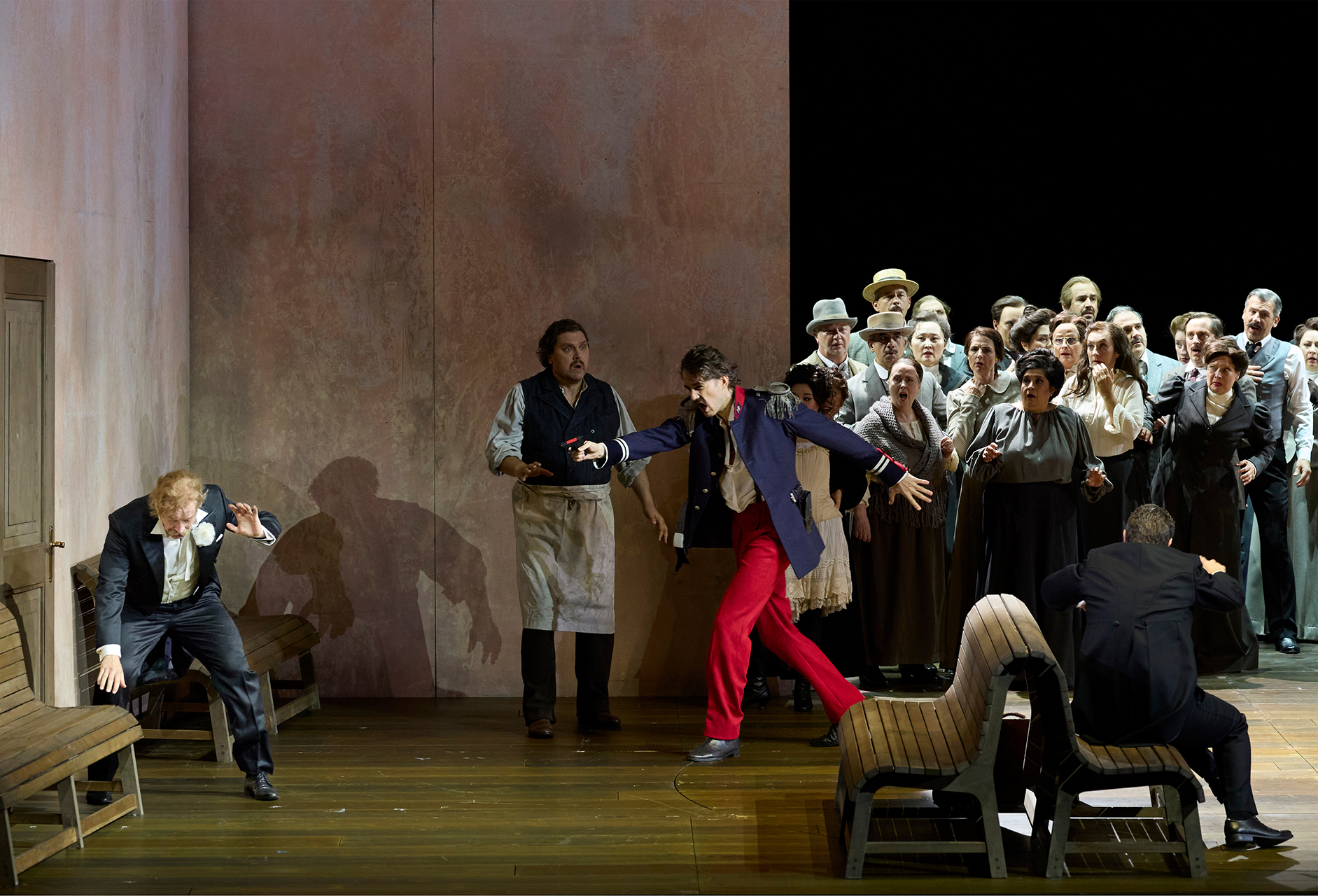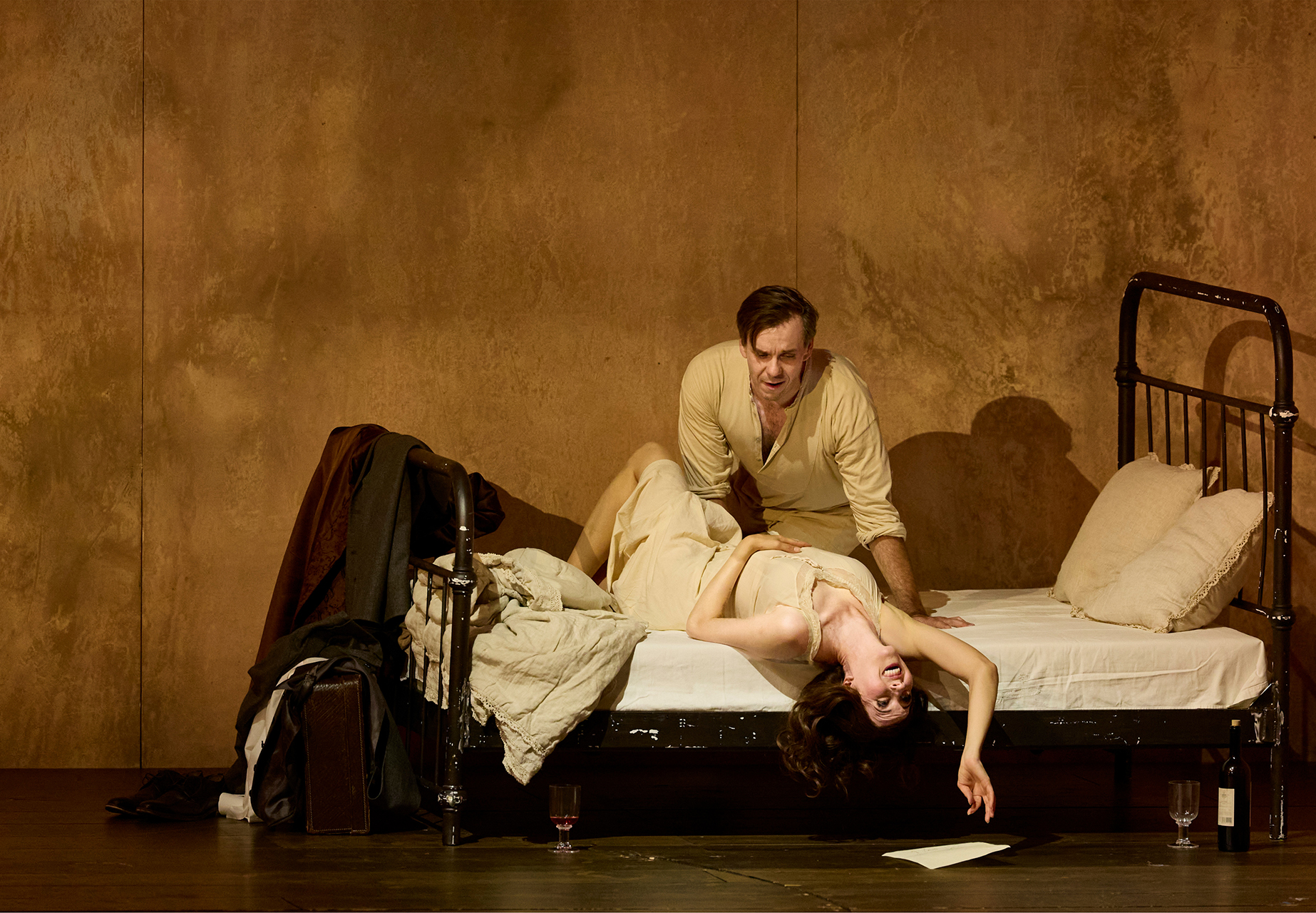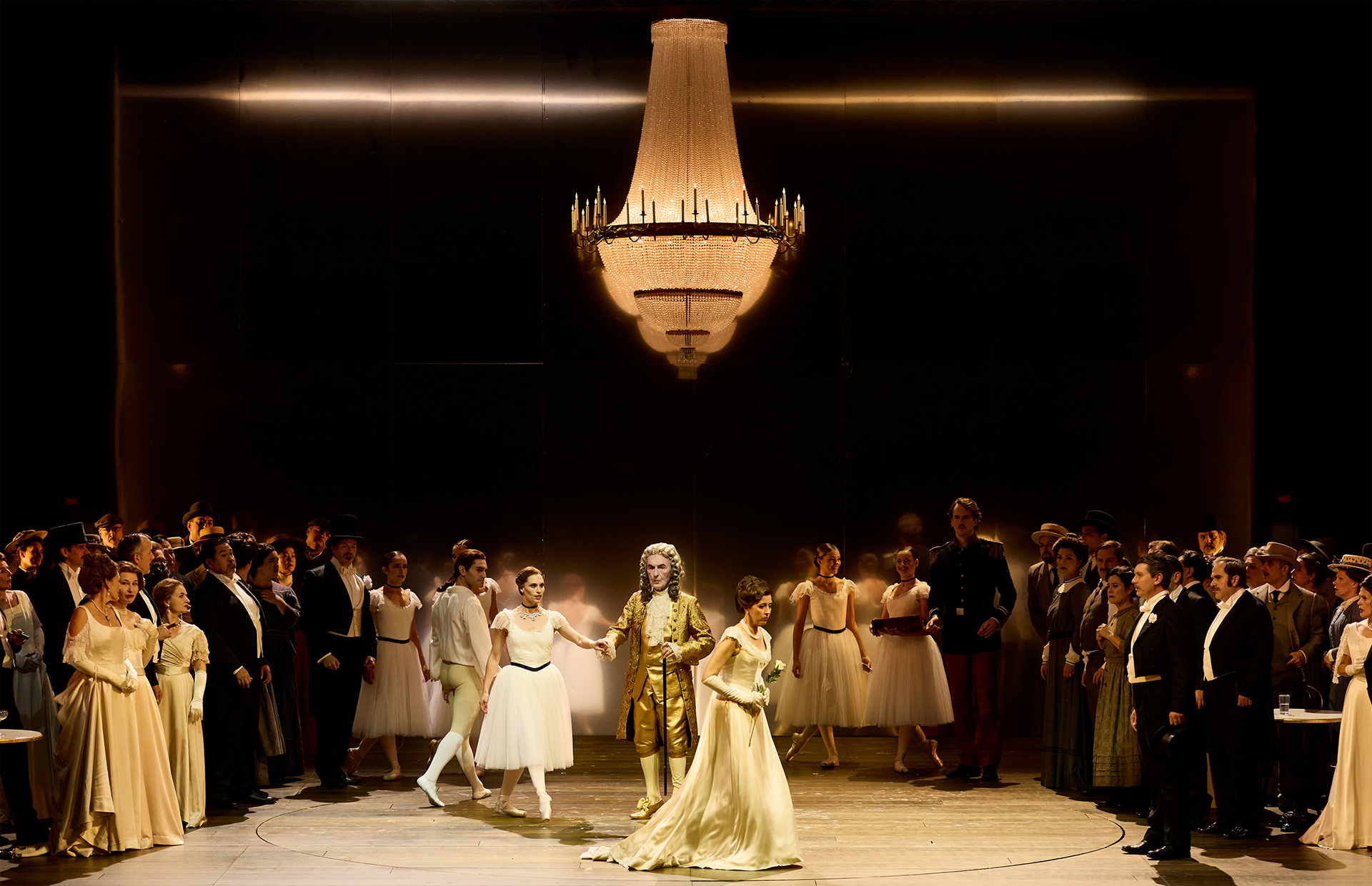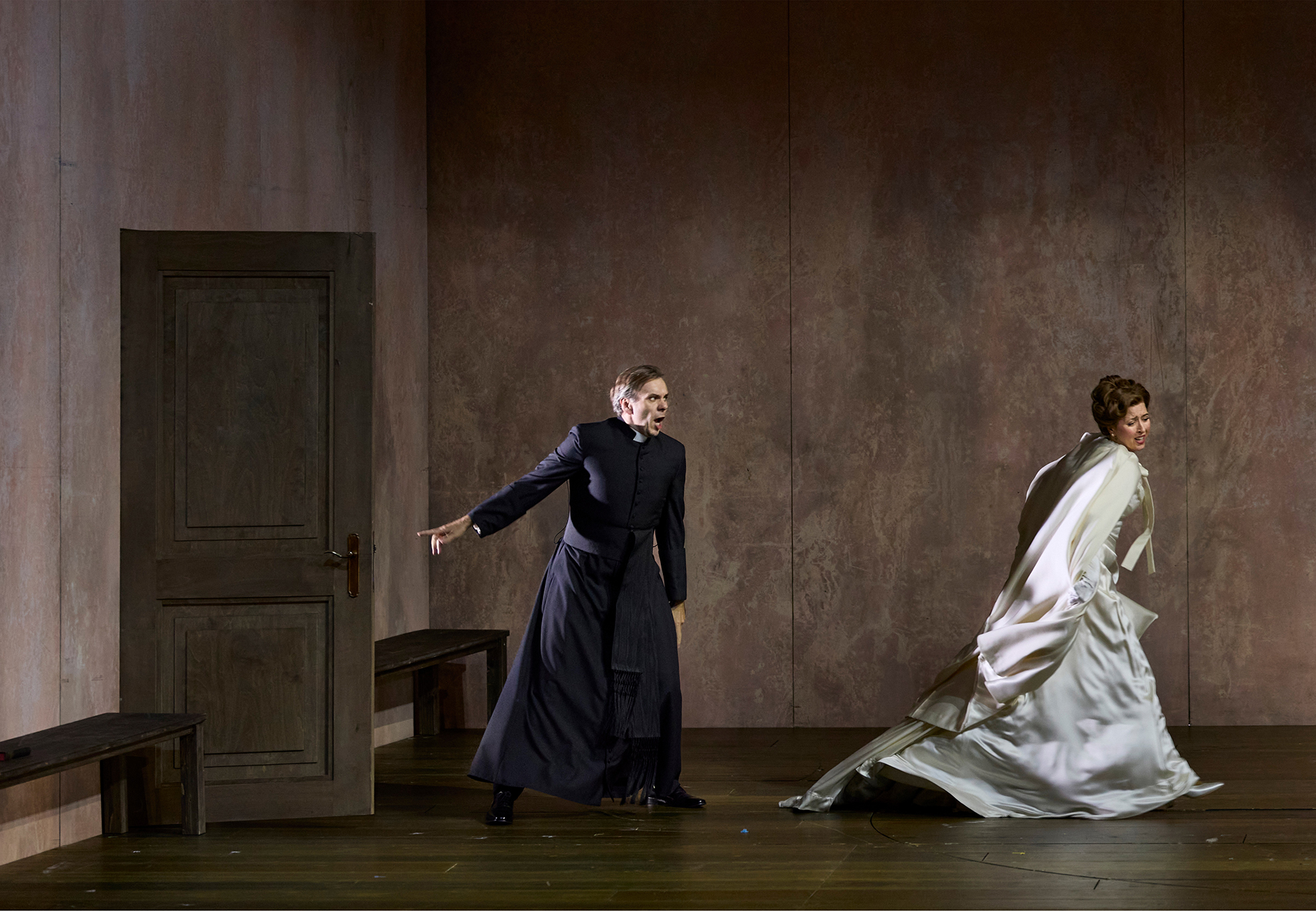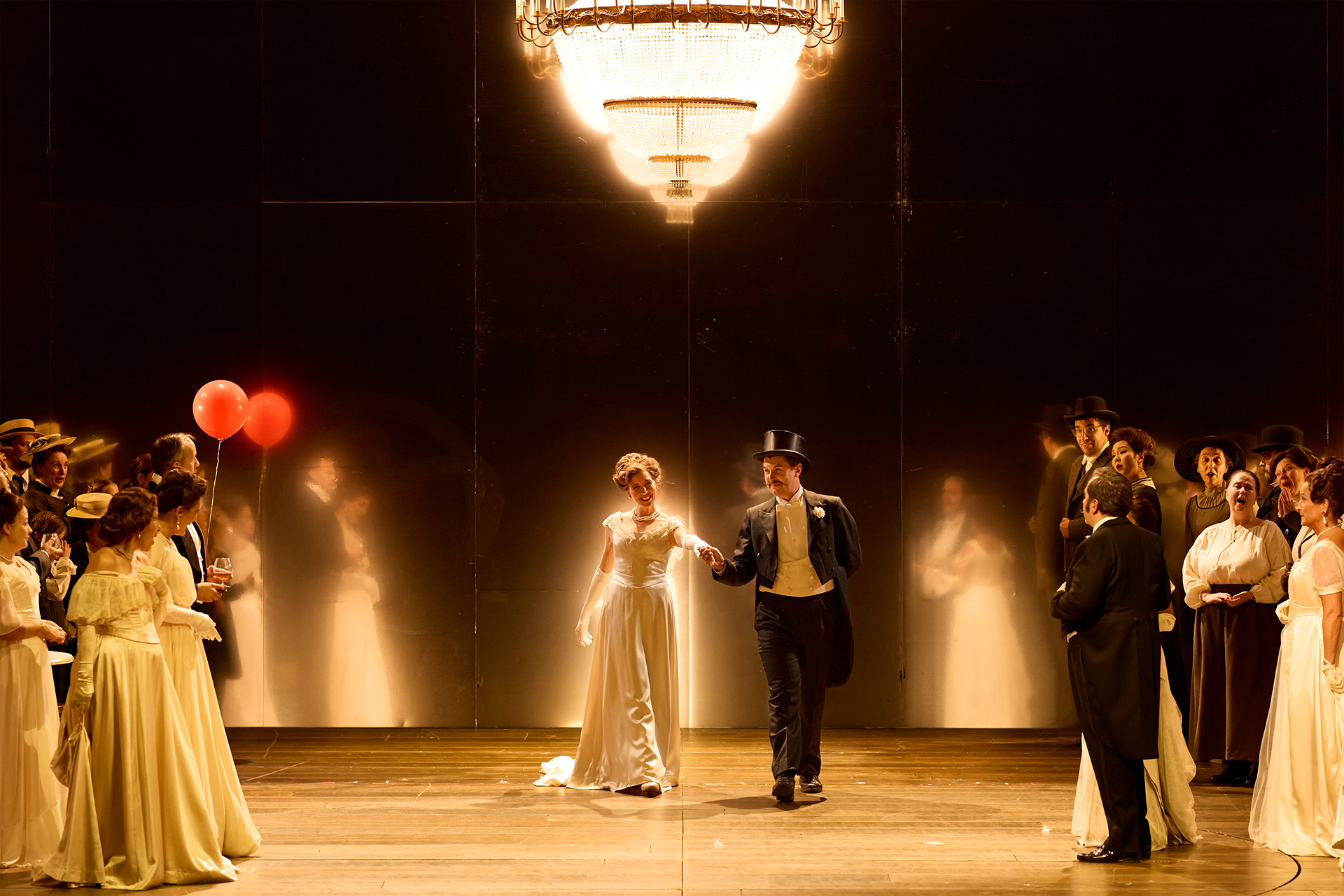 “Manon” at the Zurich Opera – or how to make 250 euros
“Manon” at the Zurich Opera – or how to make 250 euros
My day in Zurich was to be dedicated to Jules Massenet’s “Manon.” For some reason, even though the opera lasts over three hours, the performance was scheduled to begin only at 7:30 p.m. The weather was wonderful for late October – a pleasant 20 degrees – so I decided to make the most of those last moments of warmth. I headed to the city centre, got off at Hauptbahnhof and set out for a leisurely walk along the river toward the opera house.
On the way, I passed charming old buildings with picturesque architecture. To my right, the river flowed lazily, with low-deck boats gliding beneath the bridges that hung just above the water, while trams slid quietly by on my left (I must say, public transport in Switzerland is just as efficient as in Warsaw). In the distance, the hills and mountains framed the city skyline. I couldn’t resist – I stopped at a café overlooking the river and the opposite bank, ordered a beer, and indulged in my favourite pastime: doing absolutely nothing. I spent another hour there, watching the city, its people, and its visitors, listening to its pulse.
Upon entering the Zurich Opera House, a friendly usher handed me a cast insert. I quickly checked for any last-minute changes and breathed a sigh of relief – all was as planned. I should add that I’ve been disappointed more than once when singers I’d traveled specifically to hear canceled at the last moment. Of course, illness is human, and I completely understand. Still, when you’ve arranged flights and hotels, it stings. Fortunately, such situations account for only a small fraction of my opera trips.
That evening, perhaps because it was a Saturday, the audience looked particularly smart, and the air was filled with the scent of expensive perfume. The age range was diverse, which delighted me – alongside the faithful elder opera-goers, there were plenty of middle-aged patrons and even quite a few young people. The lights dimmed, the conductor took a bow, and after the deafening “Tosca” I had endured the night before, I braced myself for another sonic assault. But no! What a difference! It was as if a different orchestra were playing. The music that rose from the pit caressed my ears – pure relief.
The production, directed by Floris Visser (premiered in 2019), impressed with its precision and elegance. The set and costumes were designed by Dieuweke van Reij, lighting by Alex Brok, choreography by Pim Veulings, and the chorus was prepared by Ernst Raffelsberger. Dramaturgy was by Kathrin Brunner, and the entire performance was under the musical direction of Italian maestro Sesto Quatrini. The stage was conceived as a literal box: the floor sloped gently toward the audience, enclosed by three walls and a ceiling closing the space from above. This self-contained design – cutting off the backstage area – greatly improved the acoustics, projecting the singers’ voices directly toward the audience.
In the first act, the walls were lit with a warm, honey-colored glow. The scene featured benches for travellers waiting for their coaches and doors leading to an unseen inn. Then she appeared – the American soprano Lisette Oropesa as the title character, Manon Lescaut. At first, she looked demure, dressed in a modest, tightly buttoned costume and with her hair pulled back severely. She looked almost grandmotherly – a deliberate choice. In the first part of the opera, Manon is trapped by the conventions and propriety of her time. As the story unfolds, she blossoms – revealing her beauty, charm, and feminine allure.
The second act took place in a simple room furnished only with a bed and a mirror. The third act, however, didn’t fully convince me in terms of its set design: the action was relocated to a ballroom with a chandelier and a muted mirrored back wall – a choice that seemed at odds with the libretto, especially in the scene where lower-class onlookers gather to admire the heroine. The next scene unfolded in a sacristy, with the back wall occasionally sliding open to reveal the church interior. The casino scene was cleverly staged on a revolving platform with a circular card table surrounded by the story’s characters.
The finale was visually stunning. The back wall gave way to a black horizon from which the condemned women emerged, and in the final duet the side walls parted, the ceiling lifted, and the two lovers – the dying Manon and the heartbroken Chevalier des Grieux – were left alone in the open space, as if adrift on the vast sea of human destiny. From the wings entered the remaining characters – soloists, chorus, and dancers – encircling them while holding fragments of the shattered mirror that had earlier formed the rear wall.
Visser enclosed his “Manon” within a single box – a choice that immediately defines the tone of the entire production. Rather than changing physical locations, he shifts everything inward – to a psychological, not architectural space. It is the landscape of Manon’s memory, imagination, and reflection. The staging is classical, coherent, and elegant, avoiding aggressive reinterpretations or provocation. The only subtle departure from tradition comes in Act III, where des Grieux appears as a ghost visible only to Manon – a symbol of guilt and lingering affection.
In this concept, even the scenes that Massenet placed in the open air – such as the glittering, flirtatious world of Cours-la-Reine – remain confined within four walls. Manon no longer steps outside. There is no air, only reflections. Mirrors accompany her from the beginning: from the scene where, as a girl, she dreams of being a princess, to the end, when they shatter along with her world and the illusions she built out of desire and fear. What remains is a woman who, for the first time, truly sees herself – without illusions, without protection, without escape. The staging is consistent, thoughtful, and musically refined – though perhaps it lacks a bit of edge. For me, one of the finest interpretations of “Manon” remains Laurent Pelly’s production, first seen at Covent Garden and later at the Metropolitan Opera.
As for the cast, Lisette Oropesa reaffirmed my belief that she is a remarkable artist with a beautiful, flexible voice capable of soaring effortlessly to the highest notes. She moves seamlessly between coloratura brilliance and lyrical or dramatic depth. Her partner, the French tenor Benjamin Bernheim – whom I heard live for the first time – was extraordinary, his voice rich, powerful and supple. He phrases beautifully, uses pianissimos with mastery, and is completely convincing in moments of intensity. Together, Oropesa and Bernheim formed a perfect duo – vocally and dramatically – building from the very start a portrait of two passionately in-love young people for whom the world seems limitless.
Yannick Debus was also excellent as Lescaut – a tall (well over two meters), charismatic young German baritone with a good voice and strong comic instinct, yet equally convincing in serious moments. The rest of the cast – Nicolas Testé (Le Comte des Grieux), Daniel Norman (Guillot de Morfontaine), Andrew Moore (de Brétigny), Yewon Han (Poussette), and Rebeca Olvera (Javotte) – were equally impressive. Overall, the vocal and dramatic level was outstanding.
At the podium stood Sesto Quatrini, conducting with great sensitivity and precision while remaining a responsive partner to the singers. Among the evening’s most beautiful moments were Manon’s aria, the church duet between Manon and des Grieux, and, of course, the final duet. I must admit, I had chills more than once. If you ever have the chance to hear Oropesa and Bernheim anywhere in the world – don’t hesitate. It’s absolutely worth it, though if I were to attend Zurich Opera more often, I fear I might follow in the footsteps of Anthony Hopkins’ “Hannibal” and commit a crime against the brass section…
The next day, I headed to the airport. Just before boarding, it turned out that the airline had overbooked the flight and was looking for volunteers to travel the following day. Naturally, I signed up and was rewarded with a free hotel stay, dinner, breakfast, airport transfers – and €250 in cash. As a result, my trip to Switzerland turned out to be an excellent investment. Needless to say, the money will go toward my next operatic adventure.






